The Secrets Behind the Superbly Complex Code 11.59 by Audemars Piguet Grande Sonnerie Carillon Supersonnerie
Discovering the creation process behind one of the most complex wristwatches made by Audemars Piguet.

There can be no doubt that Le Brassus-based watchmaker Audemars Piguet was and still is one of the best representatives of the art of Haute Horlogerie. Certainly, the design and style of its watches have evolved over the years to become more contemporary, but one thing that can’t be denied is the brand’s ability to manufacture some of the finest complication movements. Keep in mind that Audemars Piguet is one of the rare watchmakers capable of crafting a Grande Complication wristwatch. The latest creation of the brand, which belongs to the category of traditional, handcrafted movements, is dedicated to the music of time. Combining two distinctive features, that of the Supersonnerie construction and the Grande Sonnerie mechanism (a speciality of Audemars Piguet), the brand has recently released the Code 11.59 by Audemars Piguet Grande Sonnerie Carillon Supersonnerie. Today, in one of our in-depth videos (which you can see above), we take you inside the manufacture to see how it was developed with expert commentary by Michael Friedman, Head of Complications at Audemars Piguet.
What is a Grande Sonnerie?
While most of you might be familiar with the minute repeater, the grande sonnerie is a mechanism of its own, a rare complication that is, without a doubt, amongst the most complex ones to develop and manufacture. If the minute repeater is the prince of chiming watches, then the grande sonnerie is king.
The idea of chiming watches (a generic term to indicate watches that sound the time, instead of only visually displaying the time) responds to a very simple phenomenon: the lack of light at night. Before the advent of artificial light, most people relied on church bells or striking clocks to tell the time in the dark. According to historical records, the first clock to strike the quarter-hour on demand appeared in England, circa 1675. The more sophisticated minute repeater was produced around 1710 in Friedberg, Germany. By activating a pusher or a slider on the case of a portable minute repeater clock, privileged folk could hear the time as the hammers struck gongs to sound the hours, quarters and minutes.
But, as you’ve understood, the minute repeater is a complication “on demand” that needs to be manually activated by means of a trigger or a pusher. The pusher provides energy to the chiming mechanism and activates a series of fingers, gears, levers, racks and springs that “read the time” and transform this into a sound or chiming indication of the time. A sonnerie watch or clock, also known as an “au passage” complication, displays the time and strikes the time (the sound part of the movement) automatically, without any interaction of the user. With the sonnerie watch or the clock, you can hear the passage of time at the full hour and at the quarter-hour (for a grande sonnerie) and at the full hour only (for a petite sonnerie). What makes it even more complex is that we’re talking about an entirely automated “passing” complication and not one that requires to be triggered.
What makes the grande sonnerie such a challenge to produce – and why so few watchmakers have managed to create one – is mostly a matter of the number of components it requires and the ultra-complex coordination involved between all these small, delicate components to accommodate all the calculations required for the movement to “read the time” indicated by the hands and translate it into a “mechanical music”. There are indeed two aspects to the movement of a chiming watch. First, a series of racks and gears that read the time indicated by the hands. Then, the movement “translates” it into the motion of the hammers that will strike the time on the gongs.
But that’s not all. Indeed, not only is a grande sonnerie watch capable of striking the time “au passage”, but it is also often combined with a minute repeater, which can indicate the time “à la demande” too. This means that a grande sonnerie watch has two layers, one for the repeater and one for the sonnerie mechanism.
Just for you to understand, a minute repeater is an intricate mechanism that is programmed for 720 different musical sequences. A grande sonnerie adds to that the capacity, with a passing mechanism, to strike the number of hours (at every full hour), and every quarter-hour, it repeats the hour and strikes the quarter(s). It thus has to make 96 sequences over 24 hours, for a total of 912 hammer strikes. And because the complication is entirely automated, it also requires its own source of energy – a crucial point for a grande sonnerie watch. Important to note, most grande sonnerie watches include a mode selector so that the mechanism can be switched between grande sonnerie, petite sonnerie or silence.
The Grande Sonnerie at Audemars Piguet
The grande sonnerie is one of the signature complications of Audemars Piguet. The production of grande sonneries began right from the start of the foundation of the company in the late-19th century (in 1875, to be precise), as there is evidence in the archives of grande sonnerie pocket watches by the early 1880s.
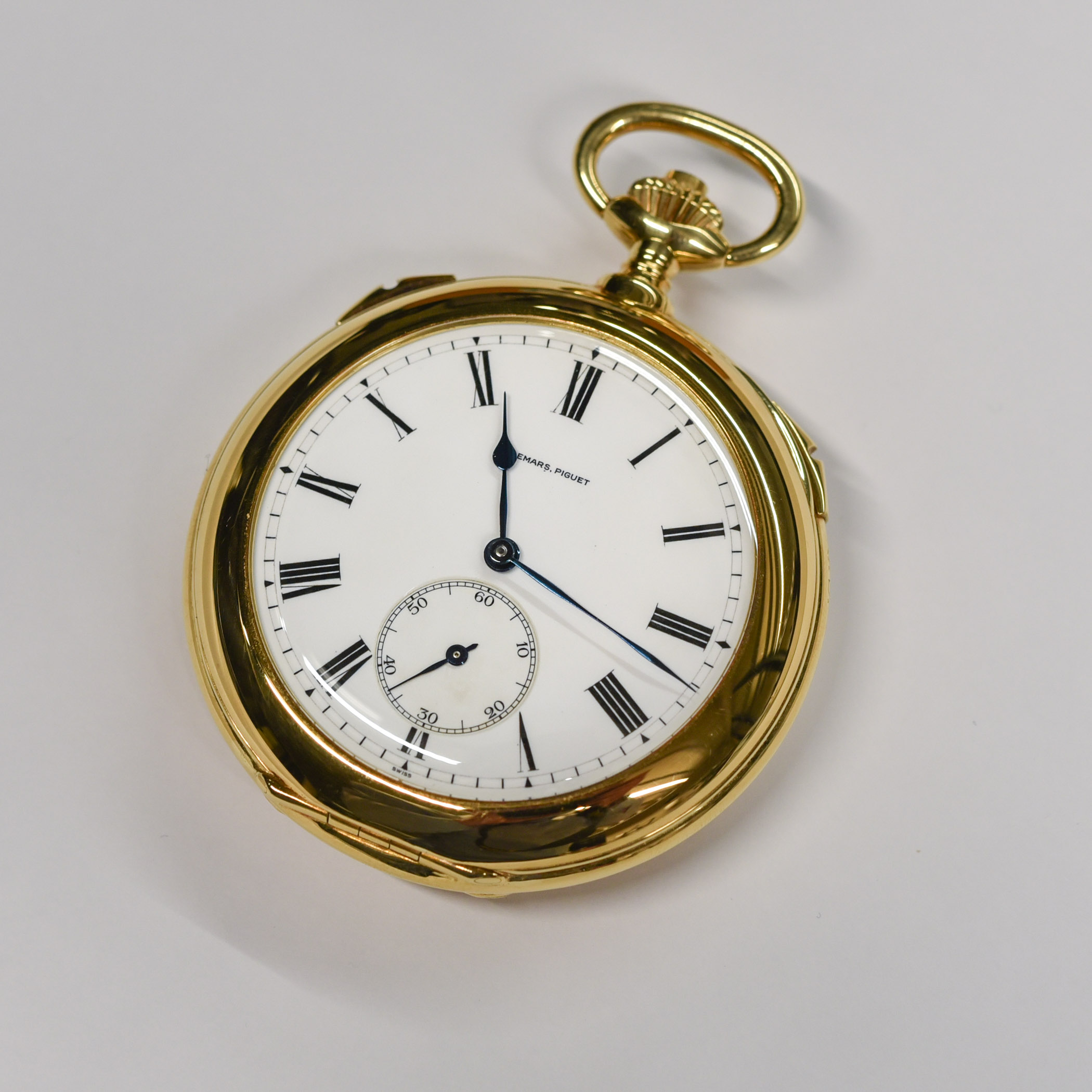
Most importantly, when mechanical watchmaking returned at the end of the 20th century, the grande sonnerie was reintroduced thanks to Audemars Piguet and Philippe Dufour. In the 1980s, Philippe Dufour was commissioned by Audemars Piguet to produce five grande sonnerie movements, thus reviving interest in the complication yet still in pocket watch form. In 1992, Mr Dufour presented his vision of a grande sonnerie wristwatch, a first for the industry, and the movement of this wristwatch also included a minute repeater.
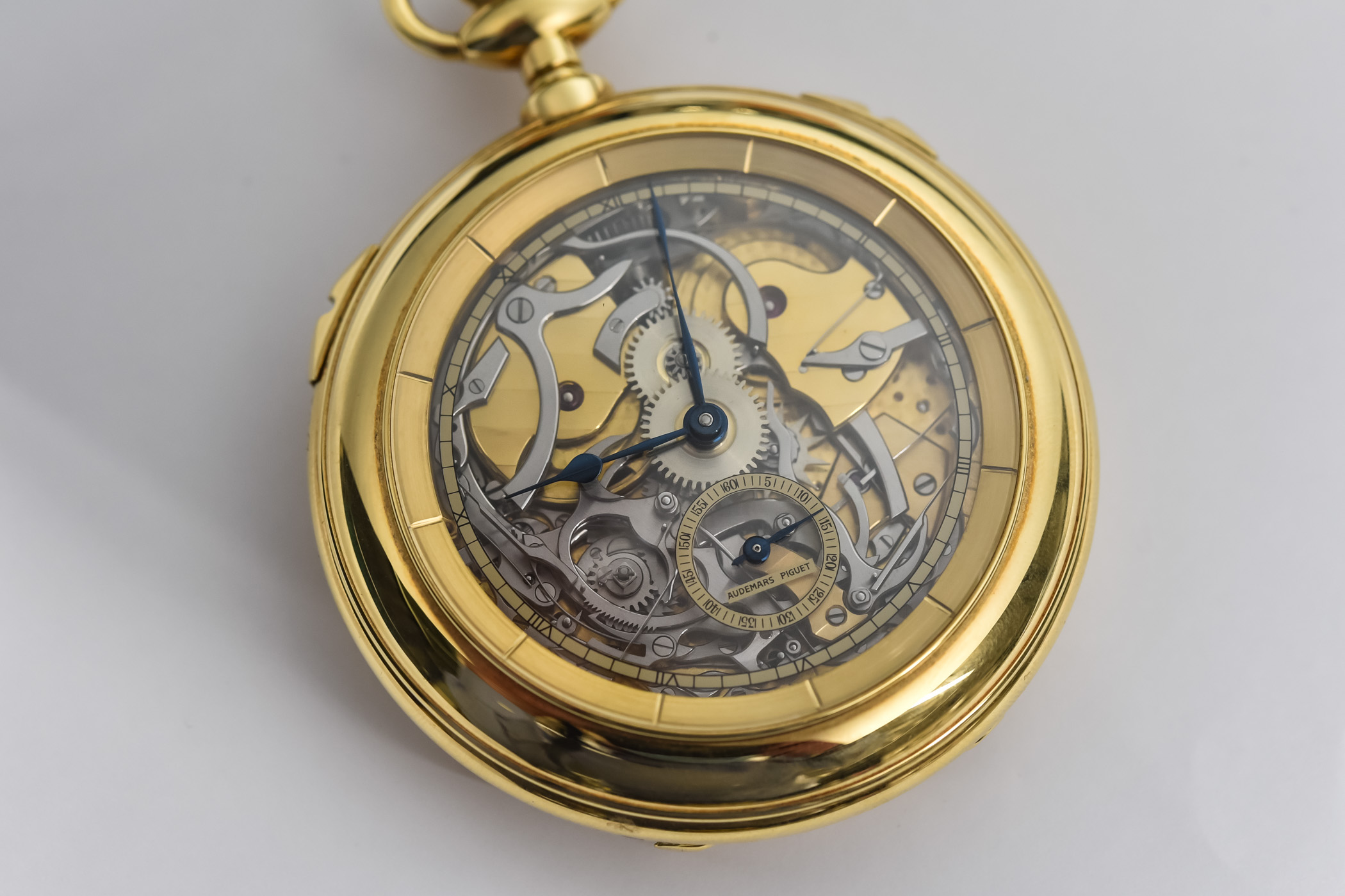
In 1994, Audemars Piguet presented a quarter repeating grande & petite sonnerie wristwatch (the references 25750BA and 25847BA, with calibre 2868, illustrated here). In 1996, just a year after another legendary watchmaker (Gérald Genta, with the help of Pierre-Michel Golay) presented his grande sonnerie wristwatch, Audemars Piguet introduced its vision of a grande sonnerie wristwatch in the Jules Audemars collection – the grande et petite sonnerie minute repeating watches (including the reference 25936 you can see here).
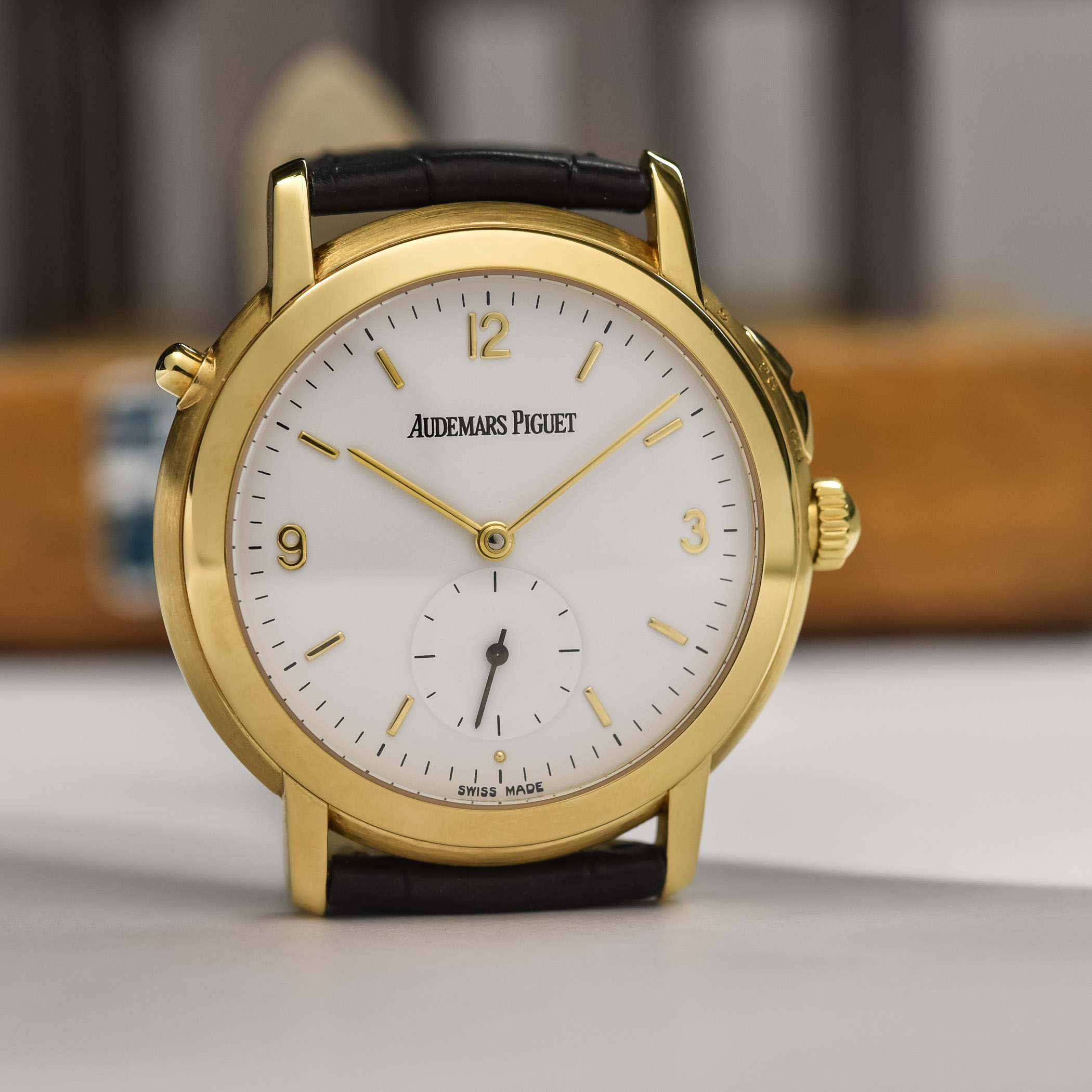
These watches were powered by calibre 2890 and calibre 2891, almost identical with the difference that the latter had an additional power reserve for the striking train and the gear train. And something important to note is that these watches were equipped with a carillon complication… Meaning that it chimes the time on more than two gongs, which is usually the norm. Here, it has three hammers and three gongs.
Even today, the grande sonnerie wristwatch remains exceptional. Only a dozen watchmakers have been capable or are still producing such timepieces – Patek Philippe with the Grandmaster Chime, the 6300 and the 6301P, Greubel Forsey and Vacheron Constantin (with the same base movement), Bvlgari with the Octo Roma Grande Sonnerie (based on a Genta movement), Credor with a Spring Drive movement, F.P. Journe with the recently discontinued Sonnerie Souveraine, Jaeger-LeCoultre with the Hybris Mechanica Grande Sonnerie, Franck Muller with Aeternitas Mega 4, A. Lange & Söhne with the Grand Complication or Ulysse Nardin with the Imperial Blue.
Enters Code 11.59 by Audemars Piguet Grande Sonnerie Carillon Supersonnerie
The grande sonnerie is a rare complication, even by AP’s standards, but one that has never been forgotten. What is worth emphasising, however, is that Audemars Piguet has recently been working on improving (and I mean, drastically) the concept of chiming watches. Years of research have resulted in the Royal Oak Concept Supersonnerie. And today, with this very special version of Code 11.59, the Le Brassus-based brand combines both technologies into a single chiming extravaganza masterpiece.
The Supersonnerie was first presented in the Royal Oak Concept case and called the RD1 Acoustic Research. The watch was a compendium of eight years of R&D, all devoted to improving the volume, pitch, tones and harmony of the sound of a minute repeater. It redefined the idea of how a chiming watch sounded. A joint creation between Audemars Piguet and EPFL (Ecole Polytechnique Fédérale de Lausanne), the idea was to create a minute repeater of superior acoustic intensity but also compliant with modern constraints (waterproofness and shock-resistant cases), and it came with three new pioneering chiming sound developments that have become technological achievements and patented innovations.
Behind the Supersonnerie concept are several bright ideas. First is the overall construction of the watch, which has been imagined as a musical instrument, to be more precise, like an acoustic guitar. It means that the gongs behave like the strings, the hammers like the player’s finger and the internal soundboard – a new element visible through the slots on the caseback – acts as the instrument’s body and helps to amplify the sound. But there’s more than the amplifying construction of the case. For instance, AP has worked on a new method for pre-preparing the steel used to create the gong structure to achieve a unique sound. By studying the alloy composition, the material cross-section, the heating process, the length and rigidity of the gongs, AP has managed to improve the clarity and musicality of the chimes.
Another important improvement with Supersonnerie comes from the construction of the chiming elements. In a traditional chiming watch, the gongs are fixed to the movement’s mainplate. In the Supersonnerie watches, the coiled gongs are attached to a new device, a material spread beneath the movement that acts as a soundboard – thanks to a specific alloy that vibrates best. Now, the gongs transmit vibrations directly to the soundboard and not to the mainplate, thus improving the sound quality, the tone and the amplification of the sound.
Finally, Audemars Piguet has been working on an important mechanical element of a chiming watch known as the striking regulator. Also known as a governor, it sets the pace of the striking sequence of hours, quarters and minutes. It has been entirely redesigned to be more flexible and thus becomes a shock absorber so that unwanted shock noises are eliminated. This helps to reduce mechanical noises that would degrade the quality of the chimes heard by the wearer of the watch. If you combine these elements, the sound becomes clearer, richer, brighter and louder too, thanks to the amplifying construction.
With the new Code 11.59 by Audemars Piguet Grande Sonnerie Carillon Supersonnerie, the brand has implemented the Supersonnerie concept into a Grande Sonnerie watch for the first time. The watch is powered by the calibre 2956, an evolution of the calibres 2890 and 2891 that AP developed during the 1990s. Although its hand-wound architecture was slightly updated for 2020, the foundations are identical. This engine is composed of 489 components, entirely assembled and decorated by hand by a dedicated team of three watchmakers.
Besides the Grande Sonnerie function explained above, the Code 11.59 by Audemars Piguet Grande Sonnerie Carillon Supersonnerie is also equipped with an additional crown to select Petite Sonnerie or Silent modes; the last is particularly useful if you want to silence the watch at night or during a meeting, or if you want to save some energy in the striking barrel. Of course, as with most sonnerie watches, the Code 11.59 Grande Sonnerie Carillon also incorporates a minute repeater. It is actuated by a pusher at 10 o’clock on demand.
There’s an important word to be highlighted in the name of this watch, and it’s carillon. Contrary to most minute repeaters and grande sonnerie watches that are equipped with two hammers and two coiled gongs, the Grande Sonnerie Carillon Supersonnerie comes with carillon architecture with a set of three gongs and three hammers. Adding enormously to the complexity of the movement, the carillon can produce a far more musical chime with combinations of high, middle and low notes. As you can hear in our video, the richness and complexity of the chimes are spectacular.
But the Code 11.59 by Audemars Piguet Grande Sonnerie Carillon Supersonnerie isn’t only a sum of technical solutions and mechanical savoir-faire. It also is a watch that pays tribute to traditional craftsmanship with dials executed by Swiss artisan enameller Anita Porchet. Born in 1961, Anita Porchet is one of Switzerland’s most recognised and respected enamellers. Her work has been seen on some of the most exclusive and rarest commissioned watches.
For Code 11.59 by Audemars Piguet Grande Sonnerie Carillon Supersonnerie, Anita has created a trilogy of “Grand Feu” paillonné enamel dials handcrafted with ancestral savoir-faire and tools. Each dial, with a blue enamel base, is unique. A thin layer of glass powder mixed with water is applied by hand on the gold dial before being heated at more than 800°C in a kiln. The procedure is repeated multiple times to achieve transparency, depth, colour and light.
To match the contemporary nature of Code 11.59 by Audemars Piguet, Anita has created three unique patterns with the paillonné technique using antique handcrafted gold spangles (“paillons” in French), at least a century old. Each spangle was meticulously cut and curved into thin gold shapes with antique tools and techniques. The enameller has carefully incorporated each spangle by hand onto the dial’s enamelled plate before fusion in the kiln. The dial is then covered with a thin layer of transparent enamel for a mirror-polish finish. To maintain the purity of the artistic work, no indexes, numerals or complications have been added to the dial – except for the hour and minute hands. In addition to this handcrafted trilogy of dials, Anita Porchet’s atelier also welcomes clients to craft a personalised enamel dial for the two remaining watches of the initial batch.
As you can see, Code 11.59 by Audemars Piguet Grande Sonnerie Carillon Supersonnerie is a true demonstration of savoir-faire, combining traditional techniques with innovation. This is not something that many can achieve, but Audemars Piguet is truly one of those rare watchmakers.
For more details, please visit www.audemarspiguet.com.

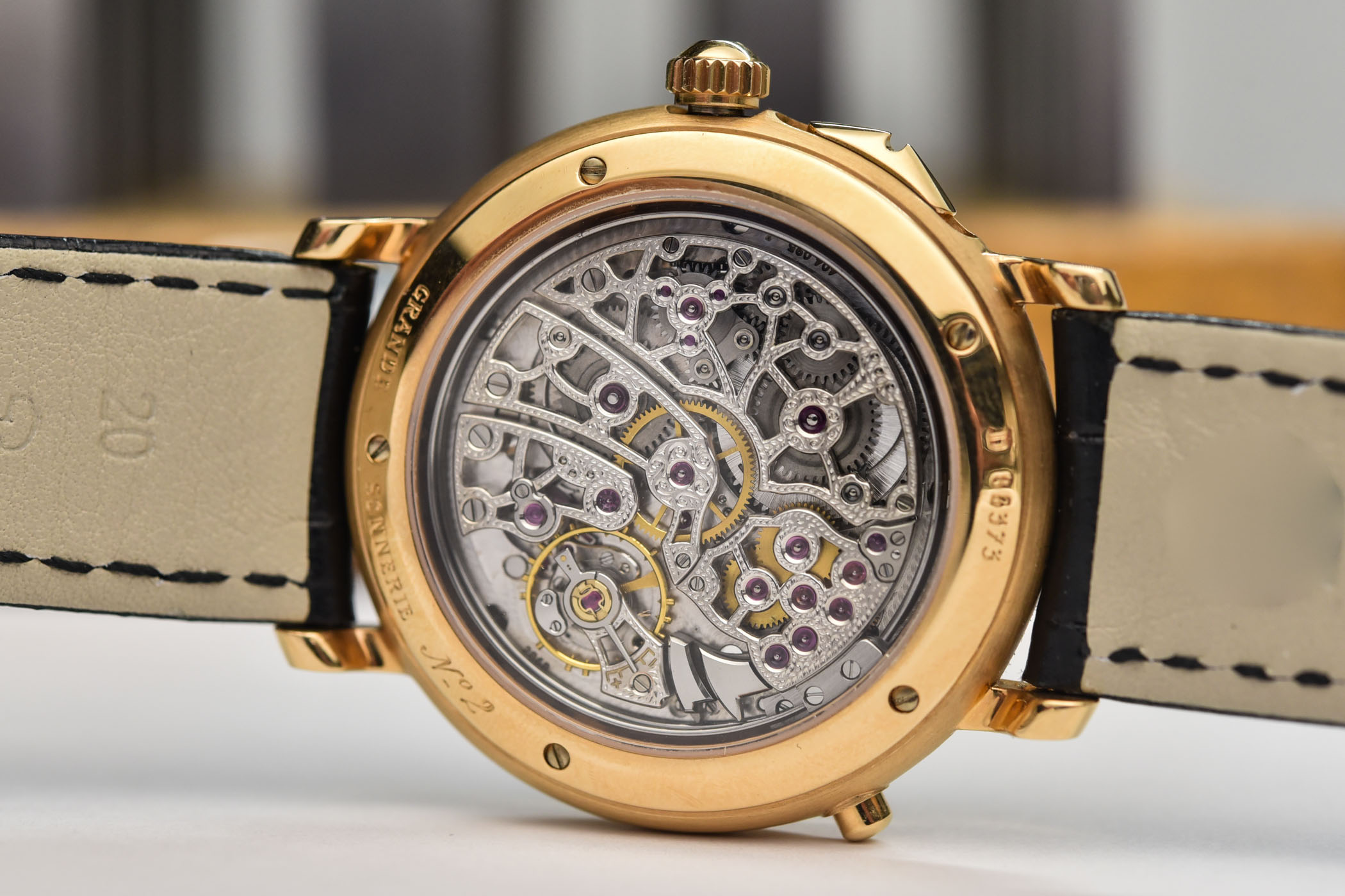
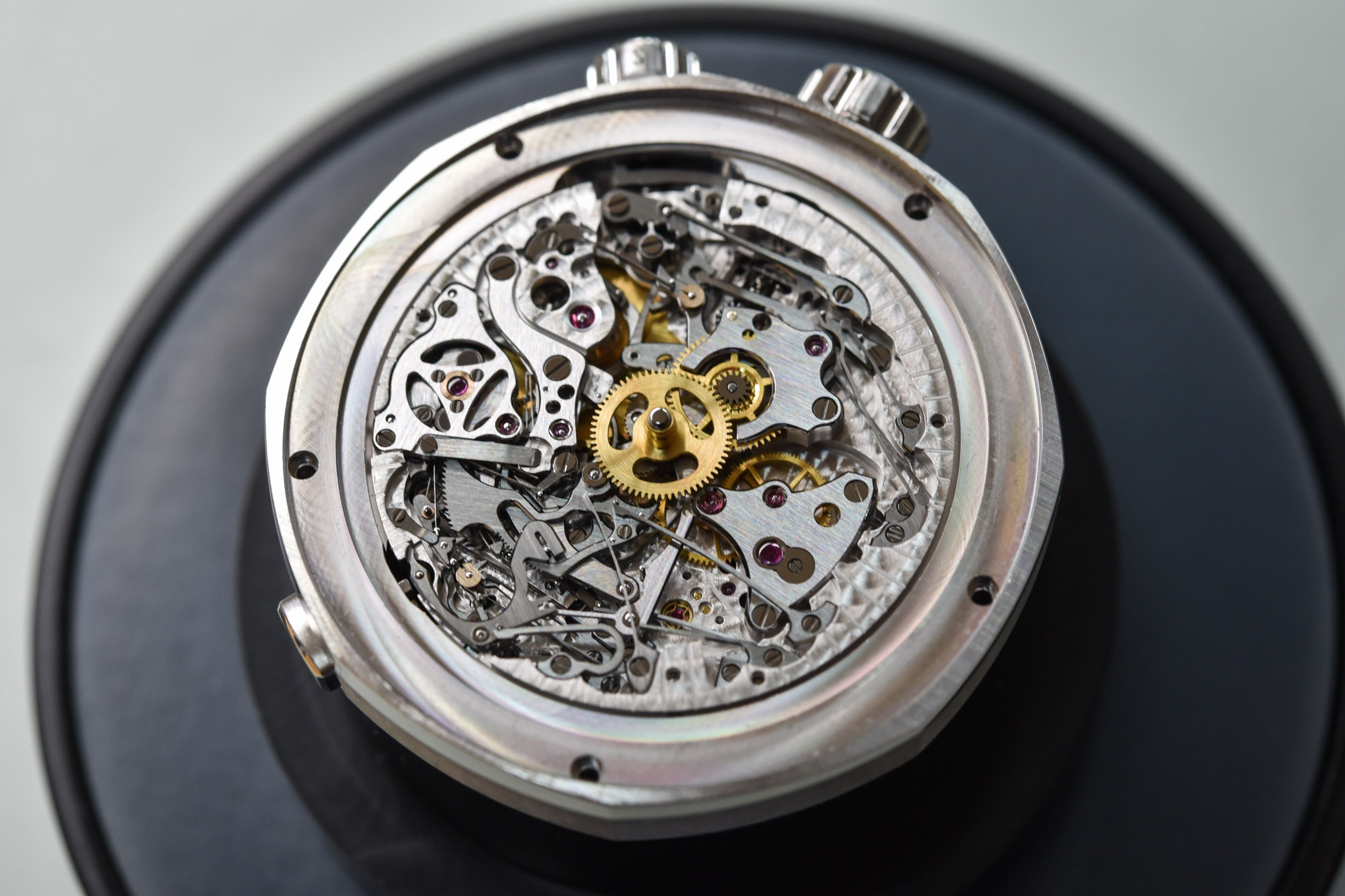
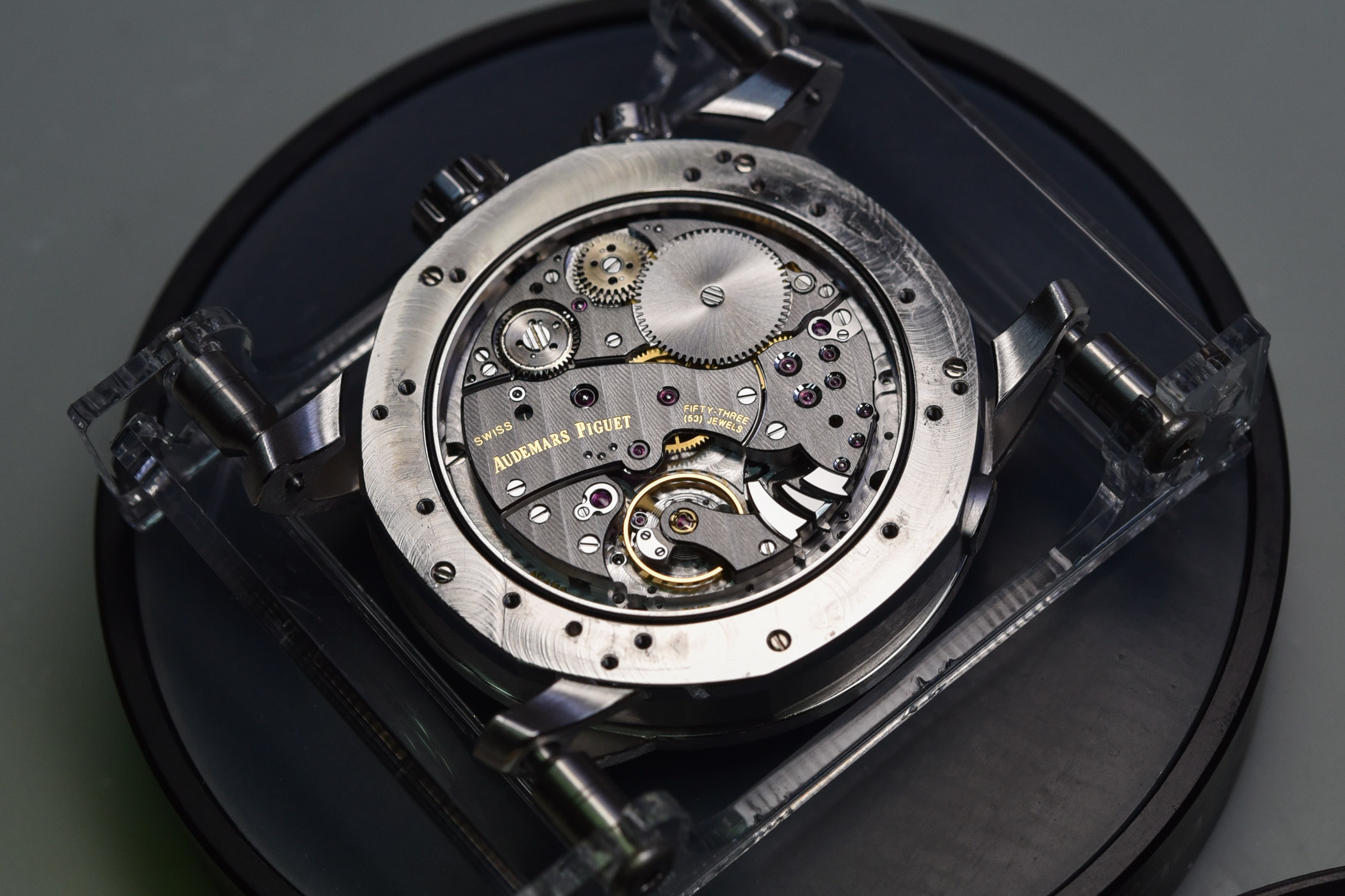
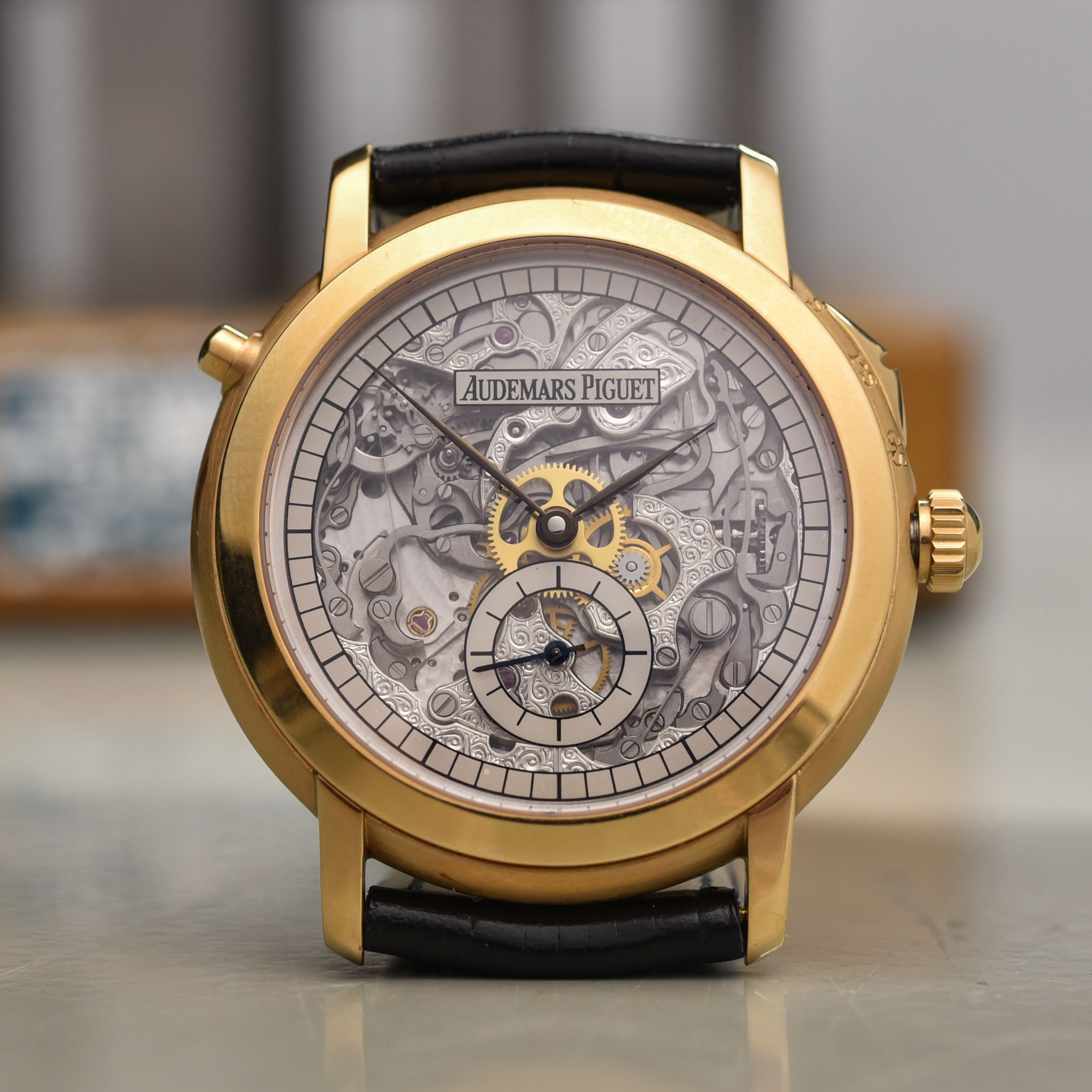
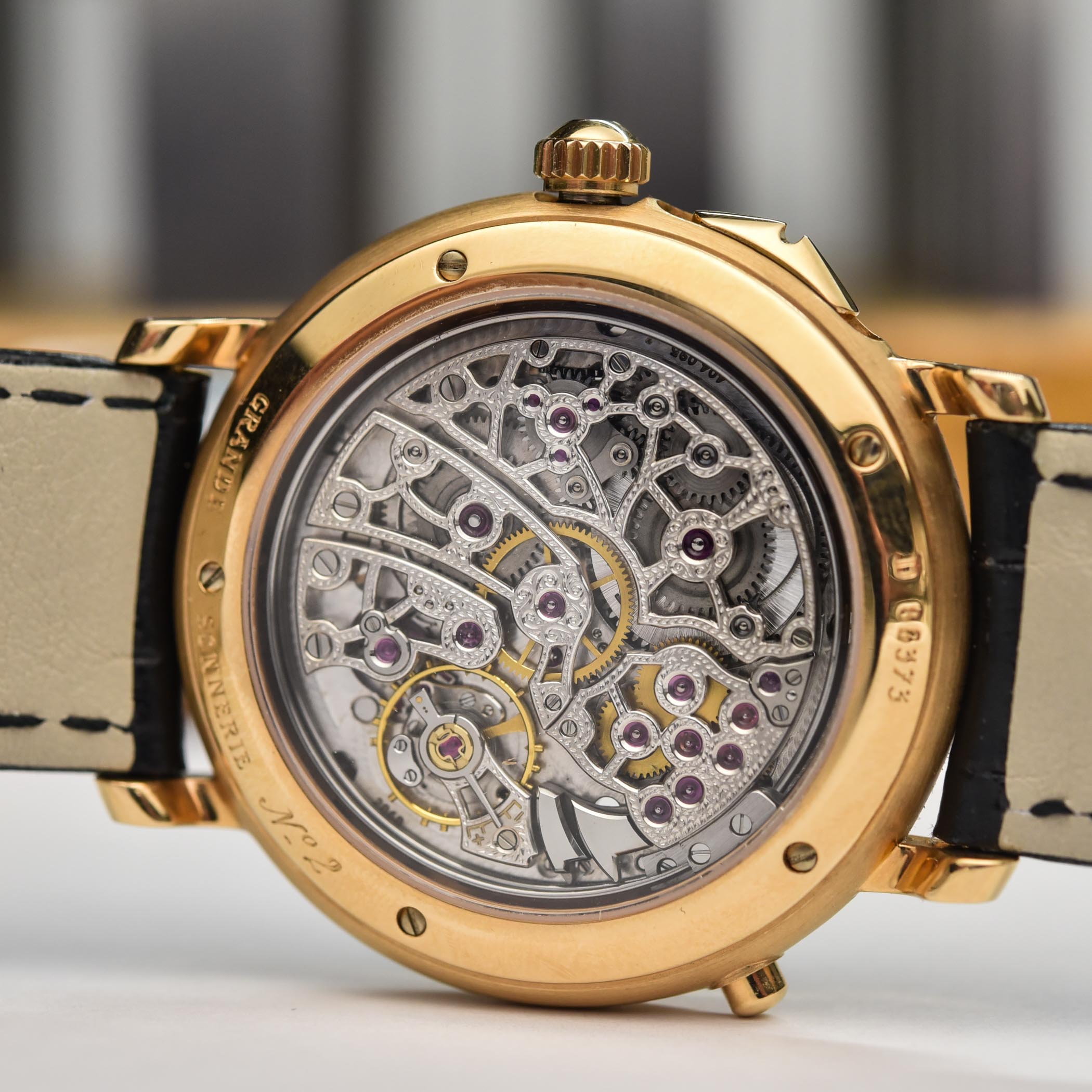
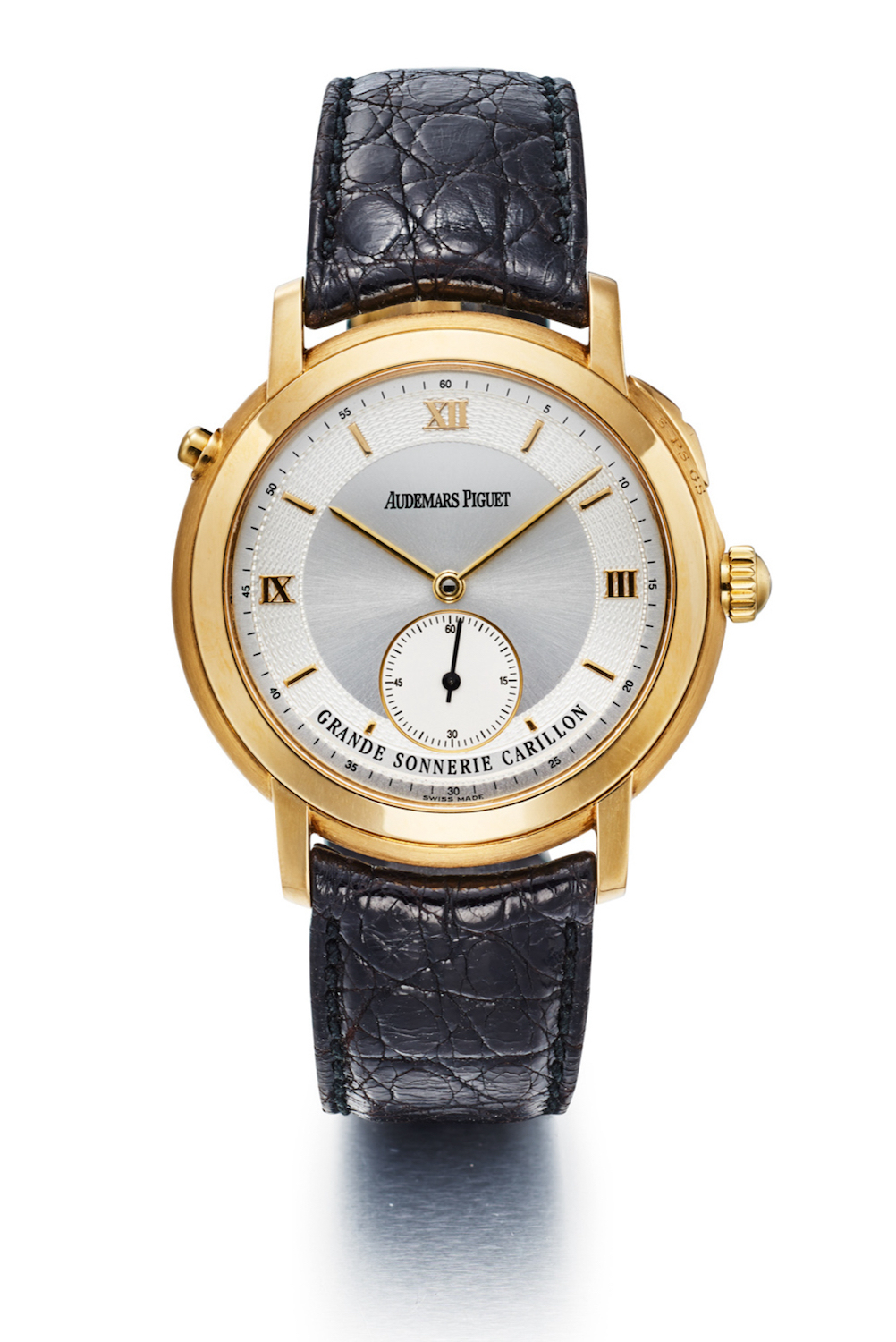
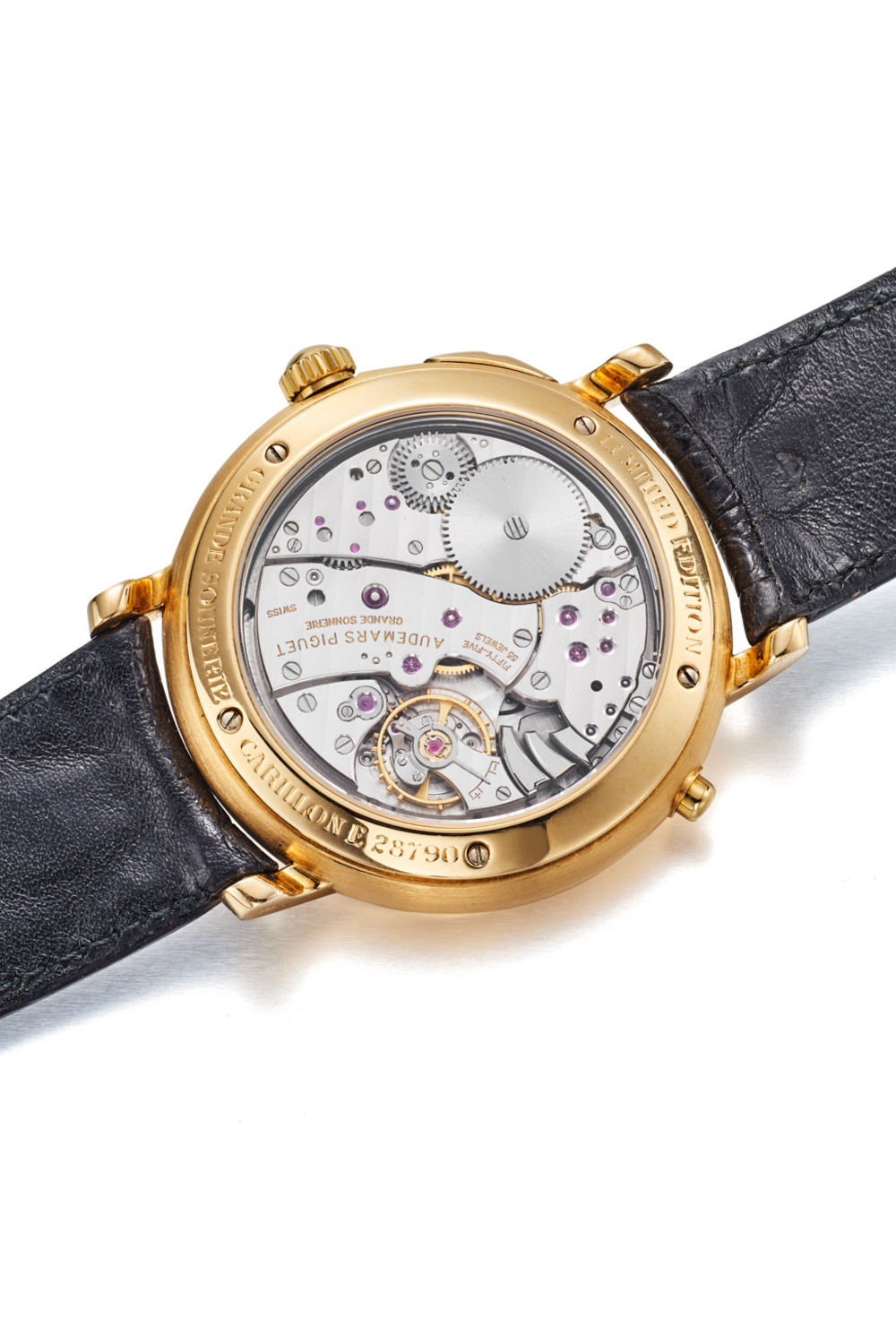
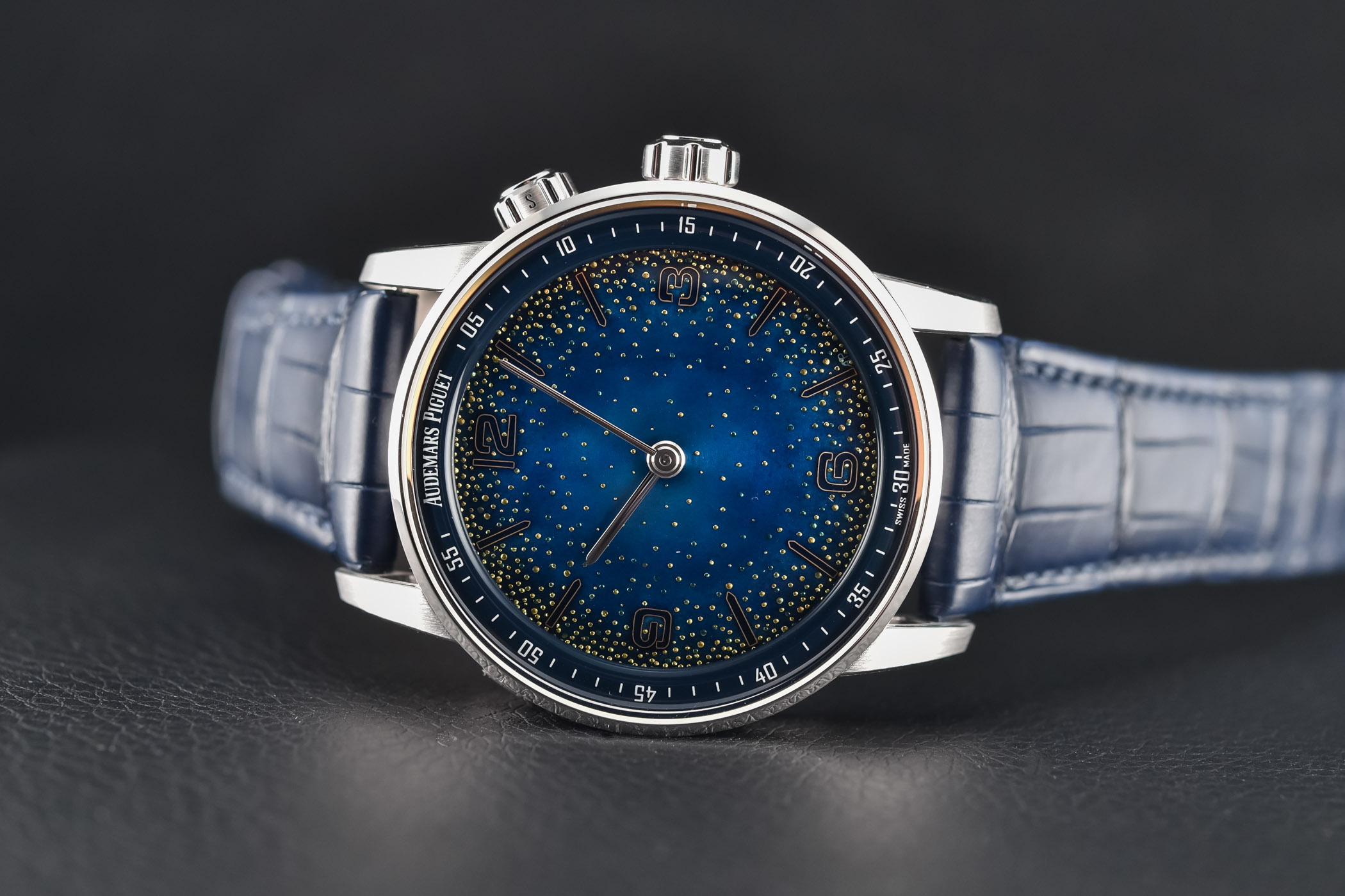
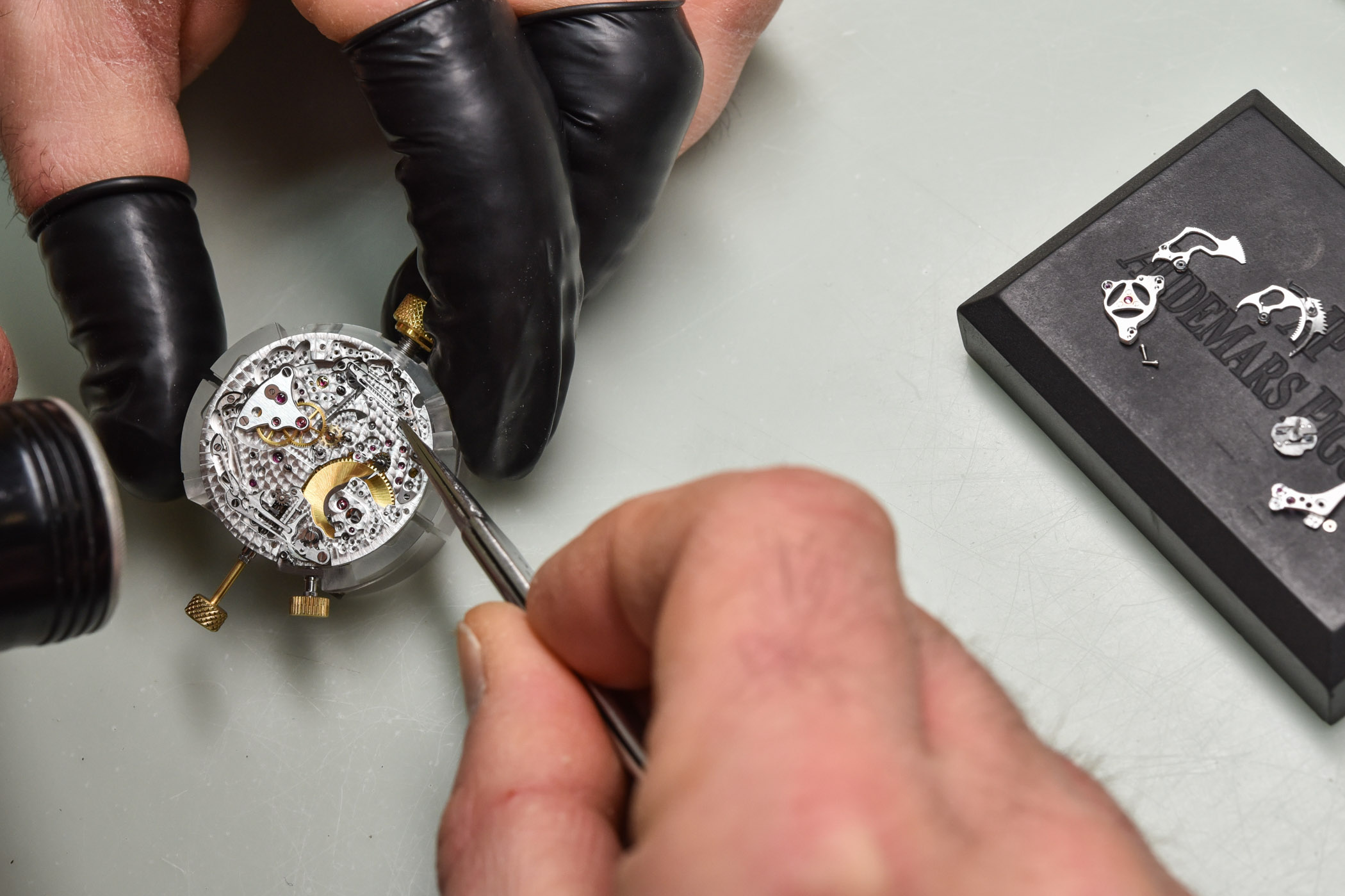
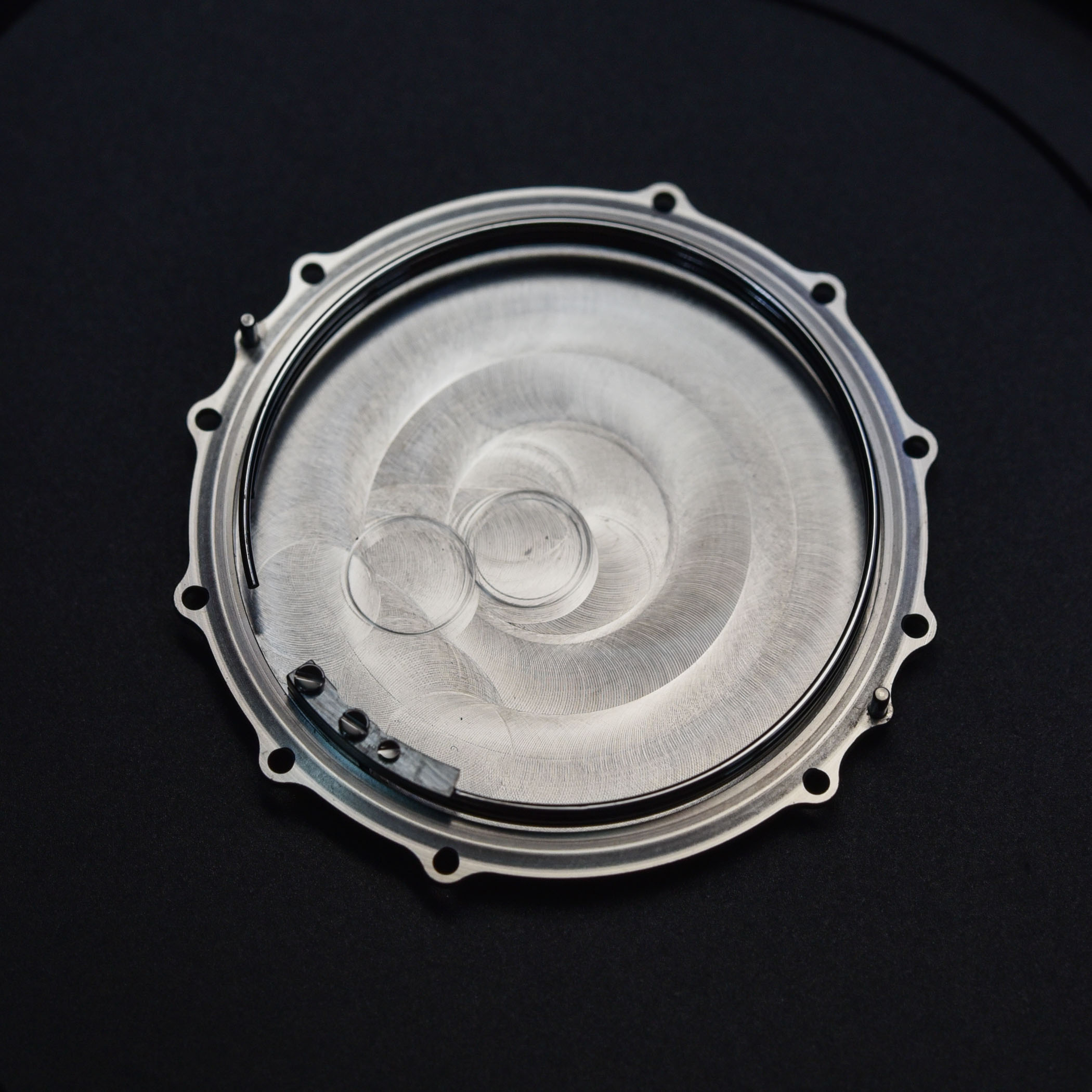
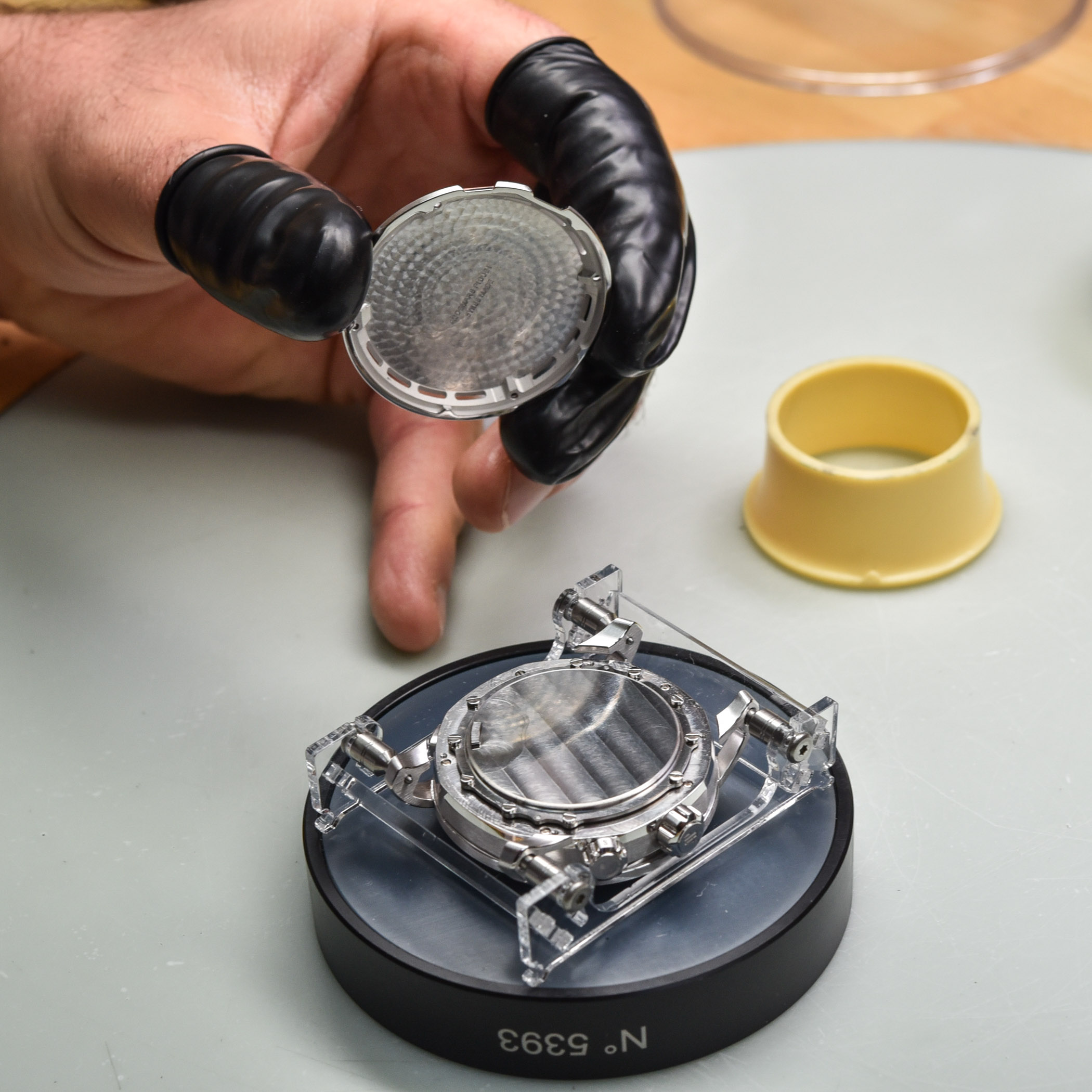
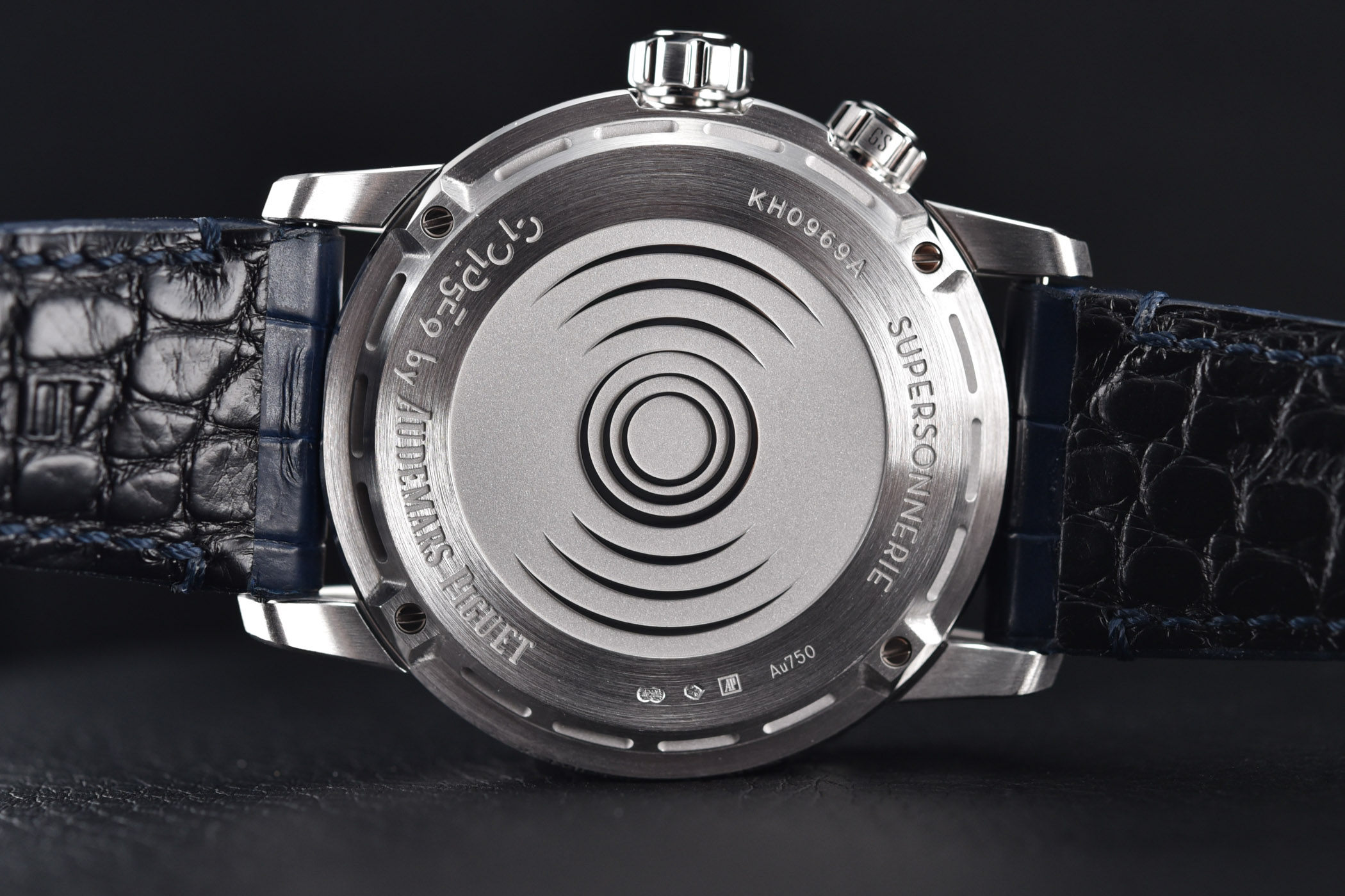
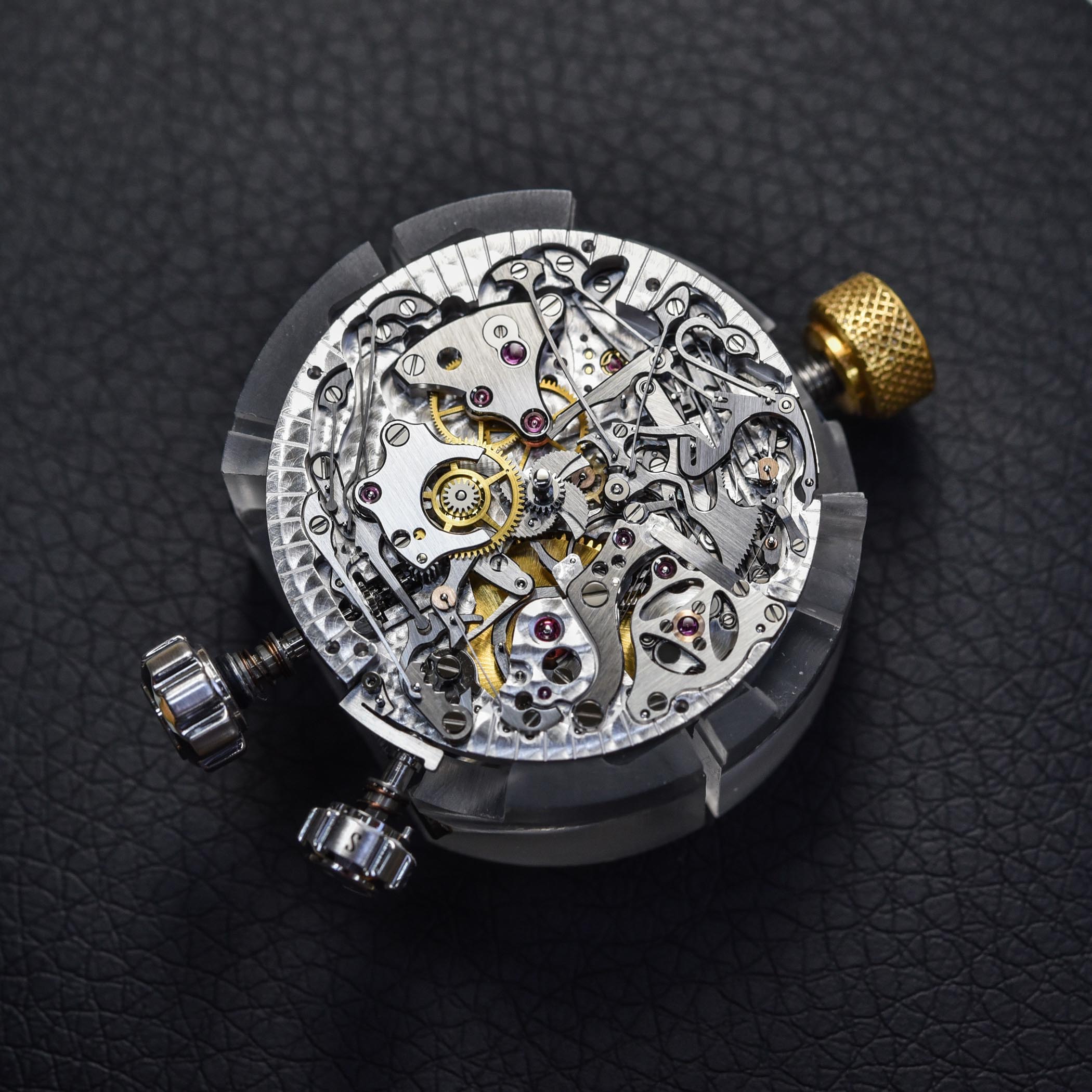
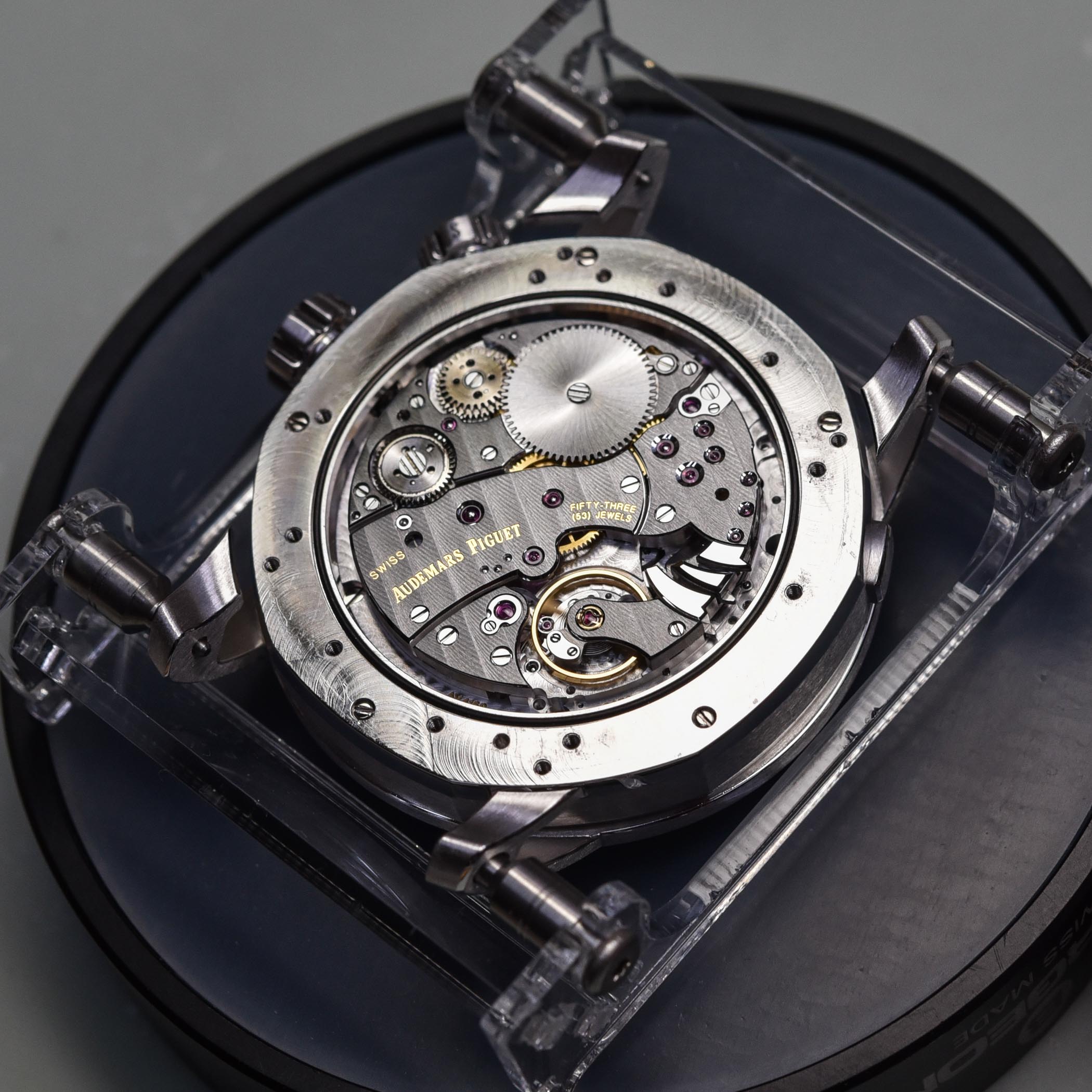
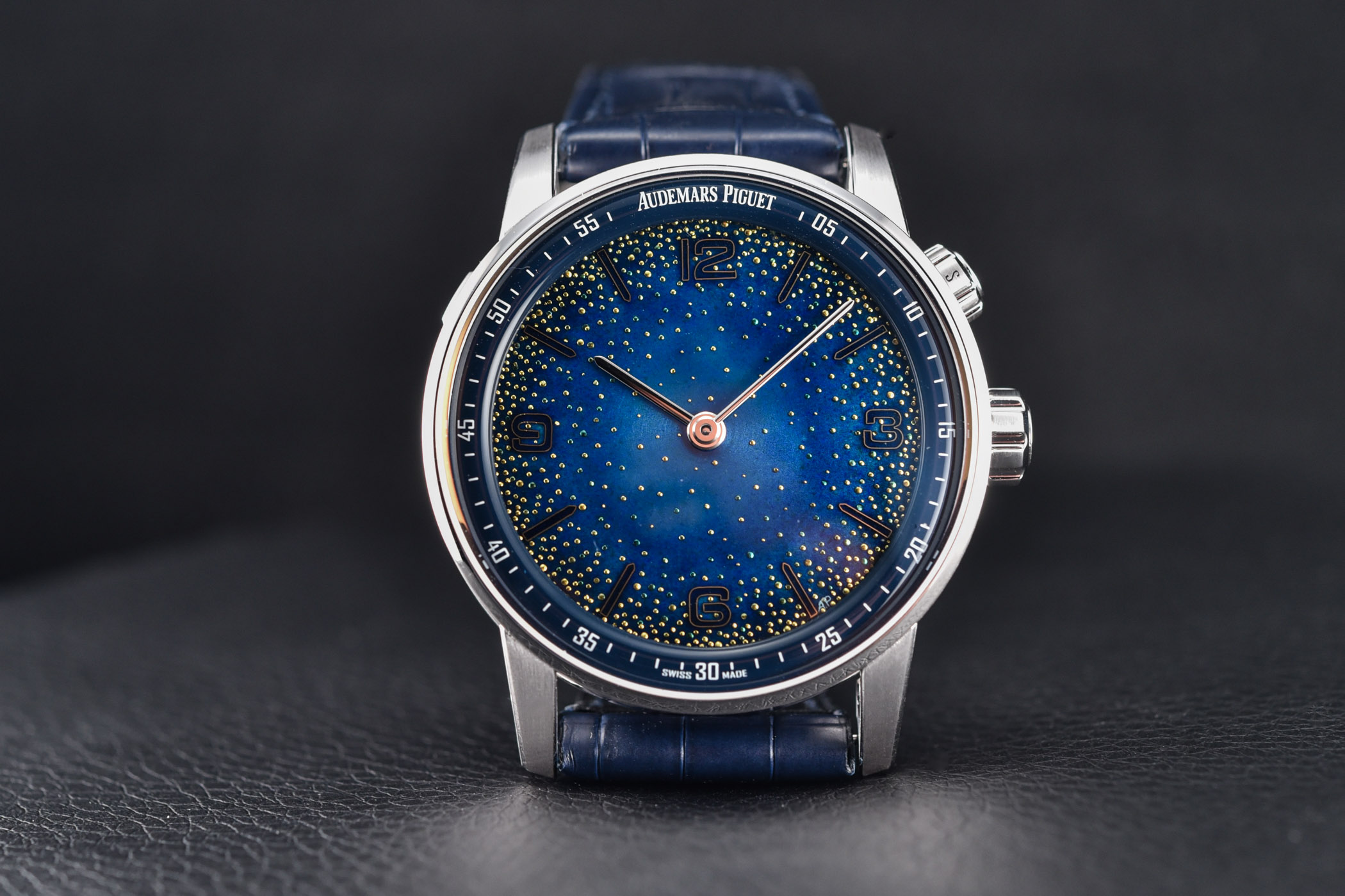
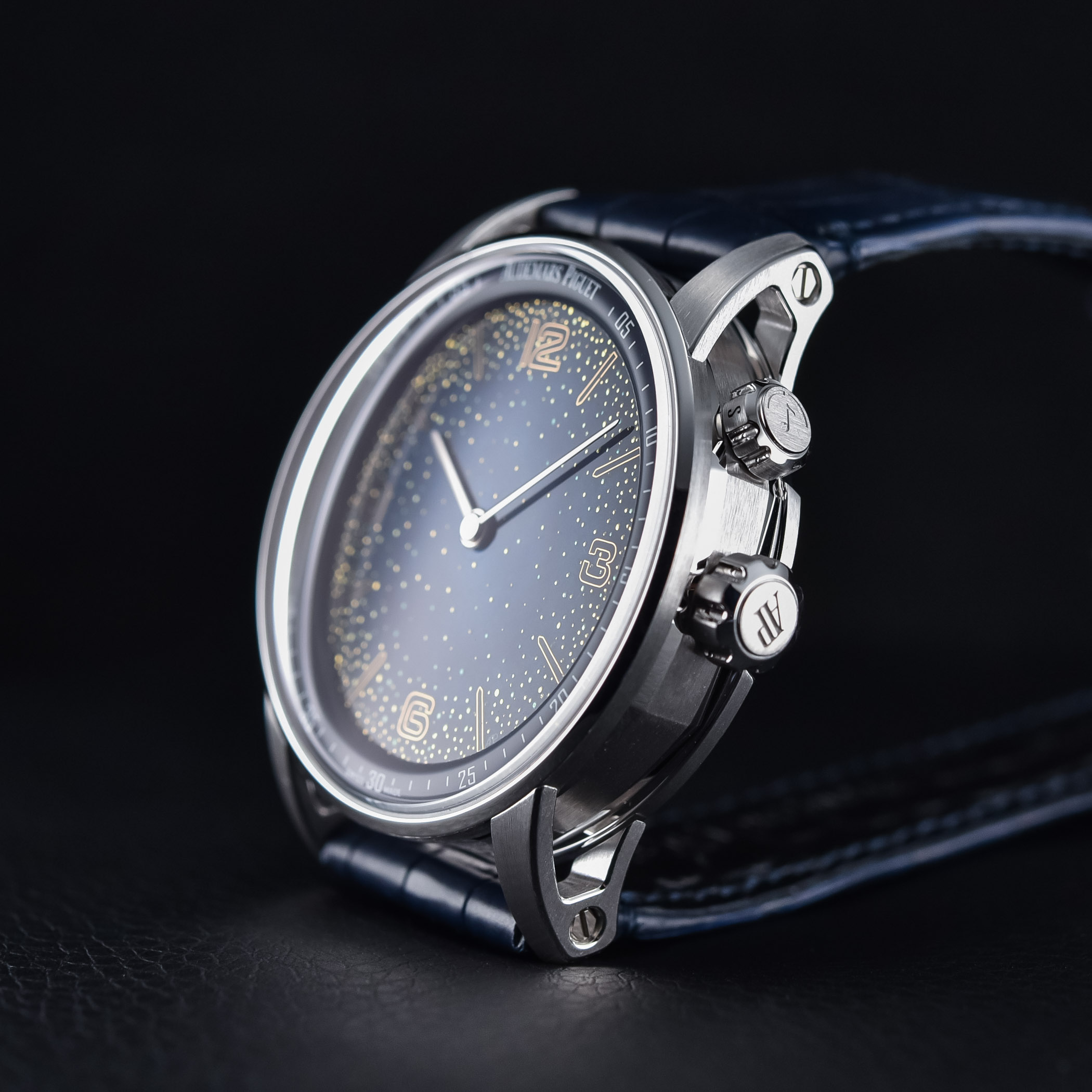
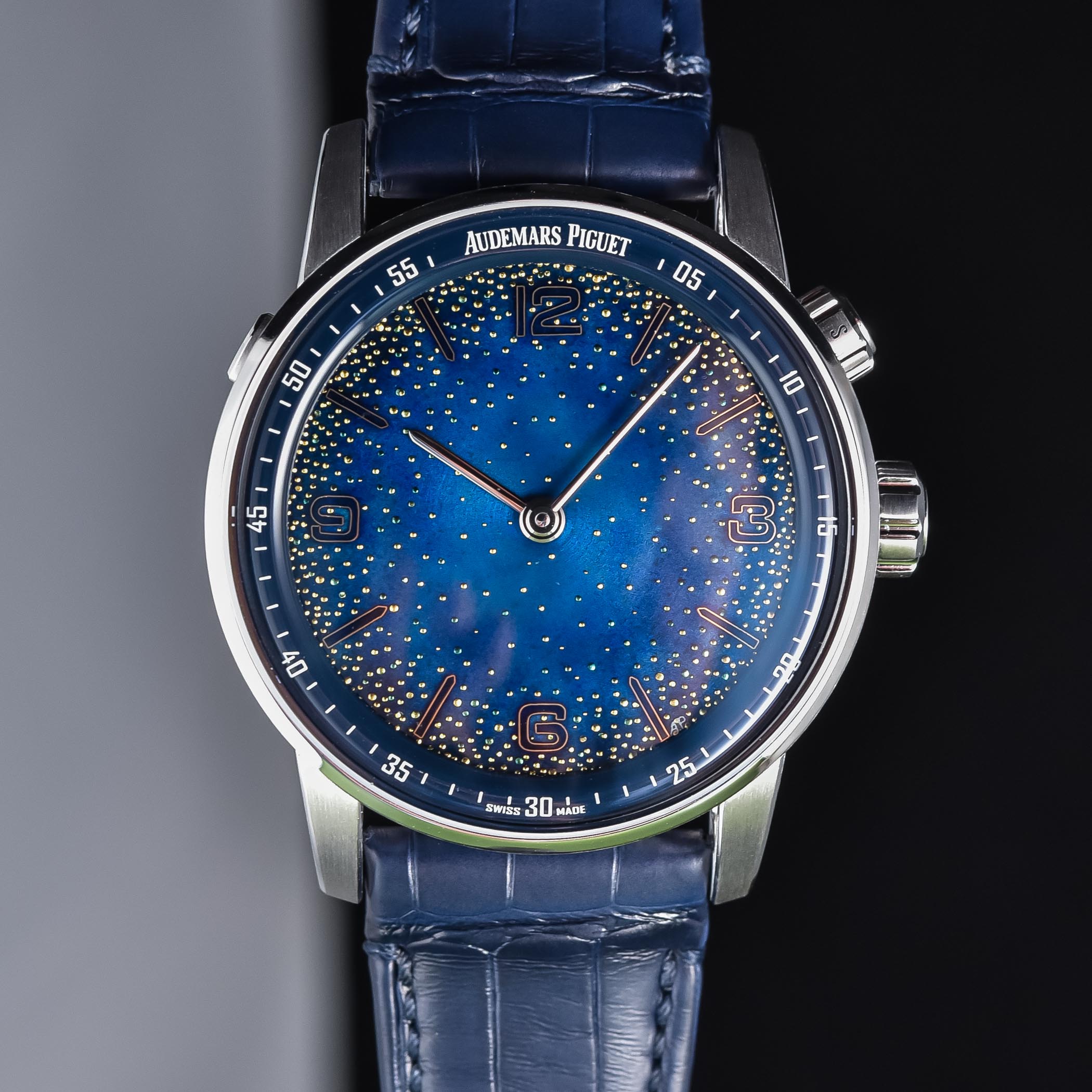
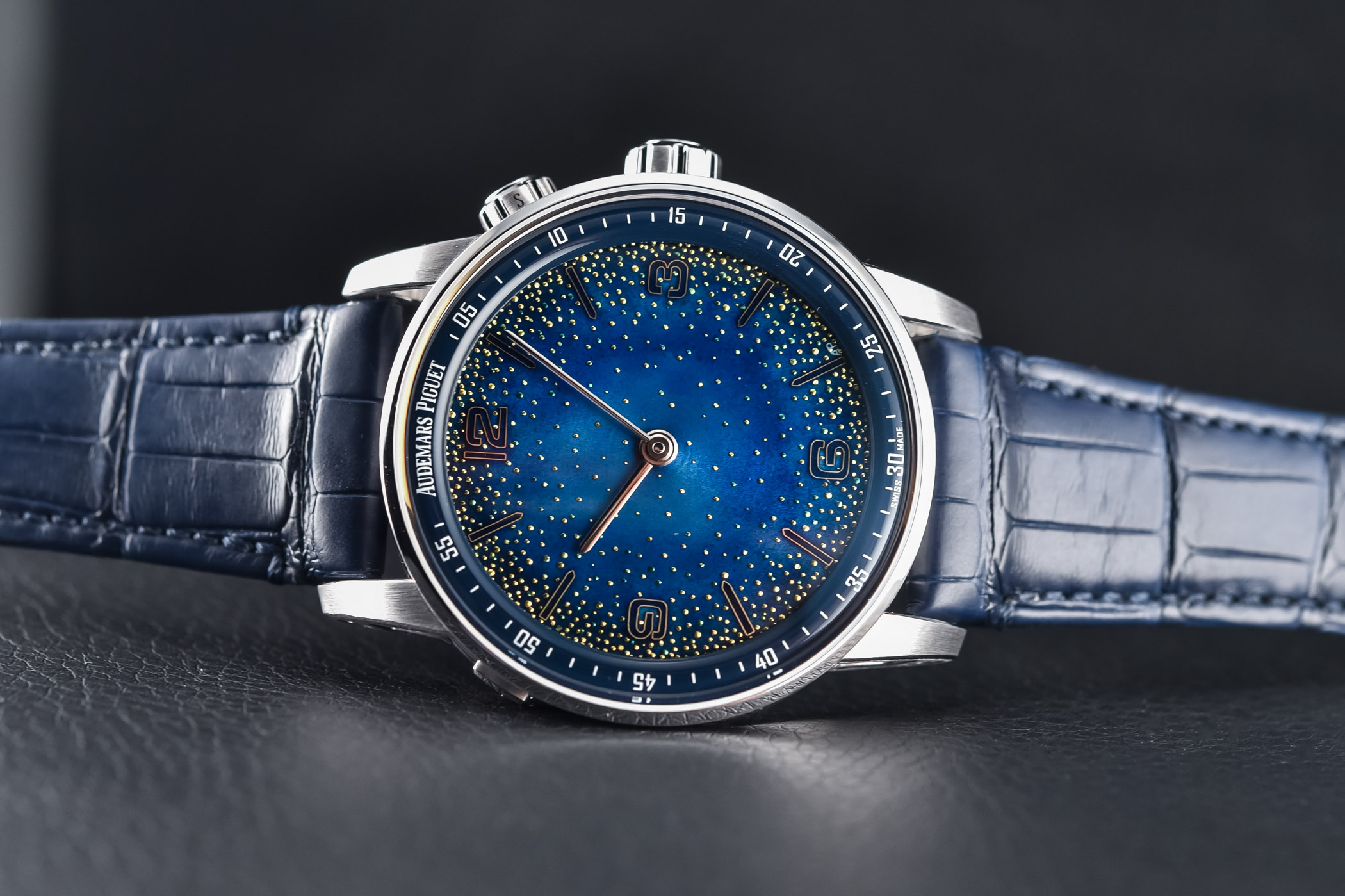
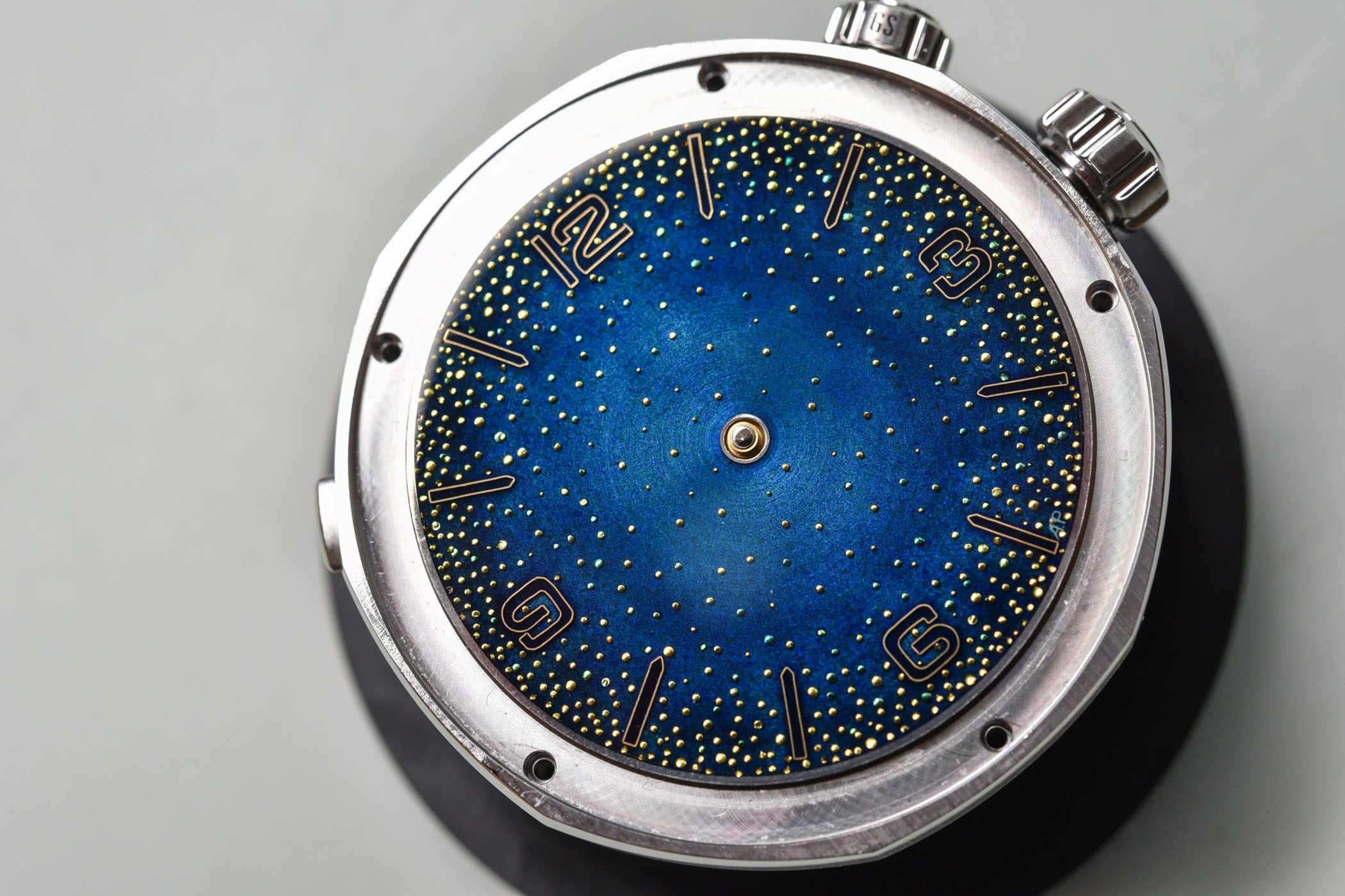

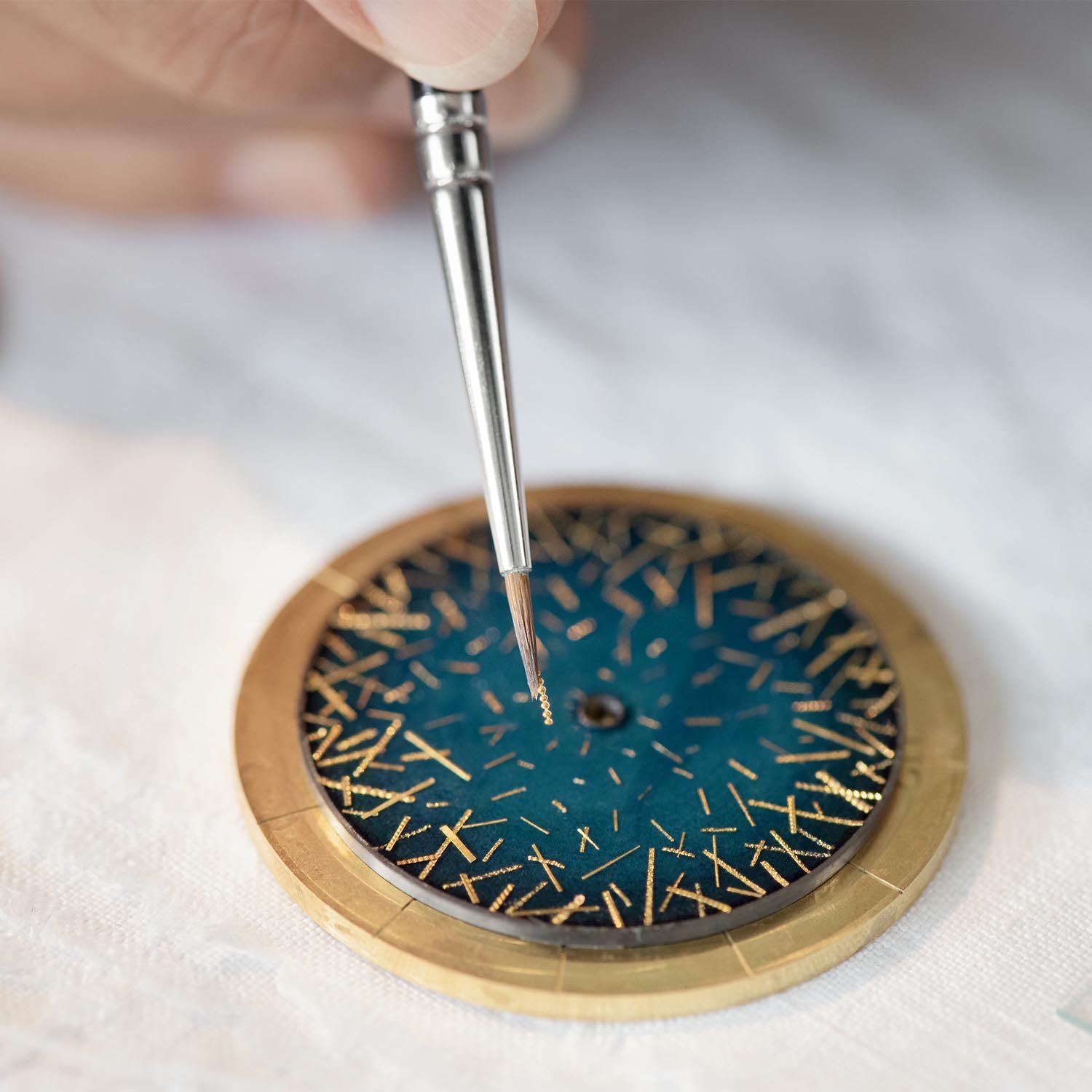
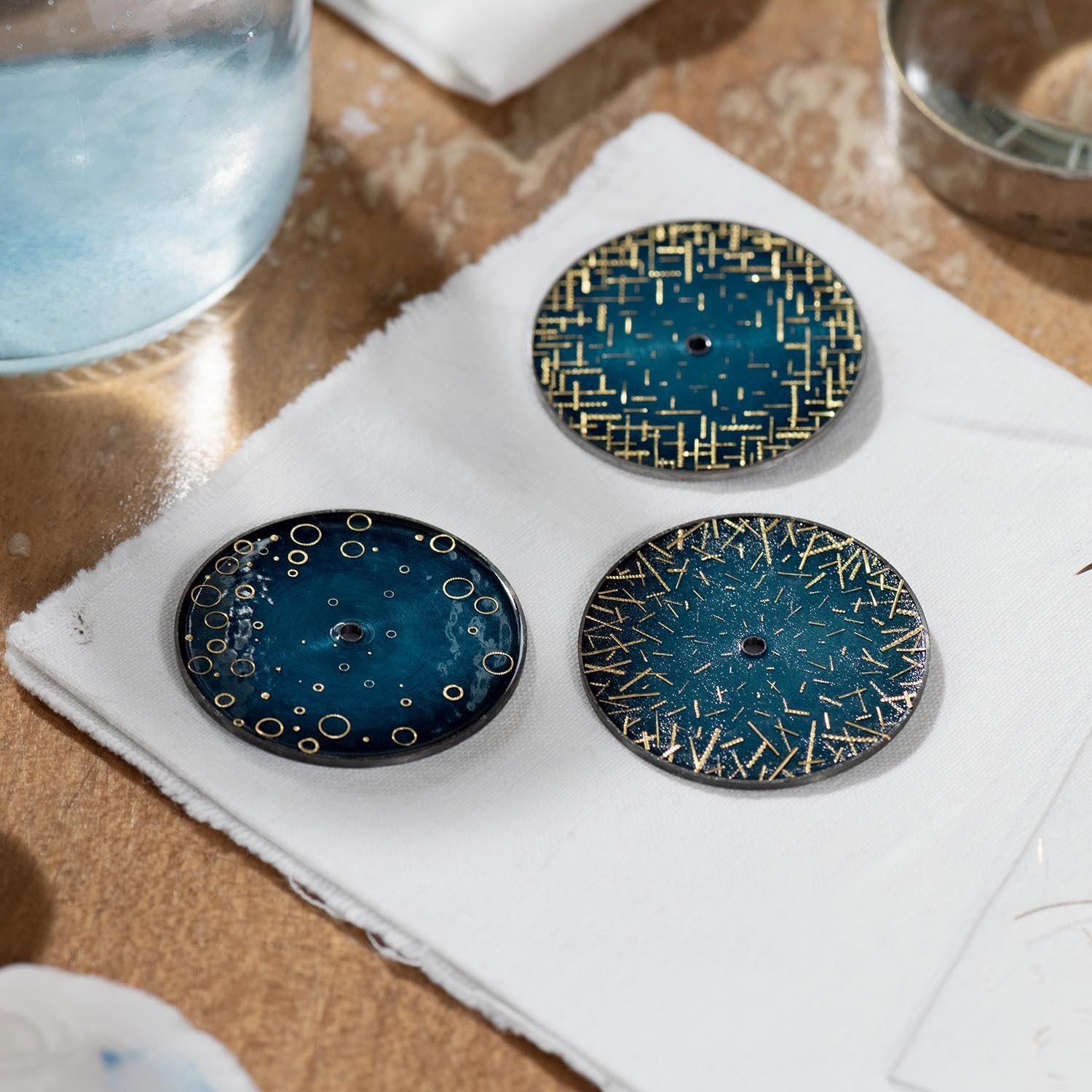
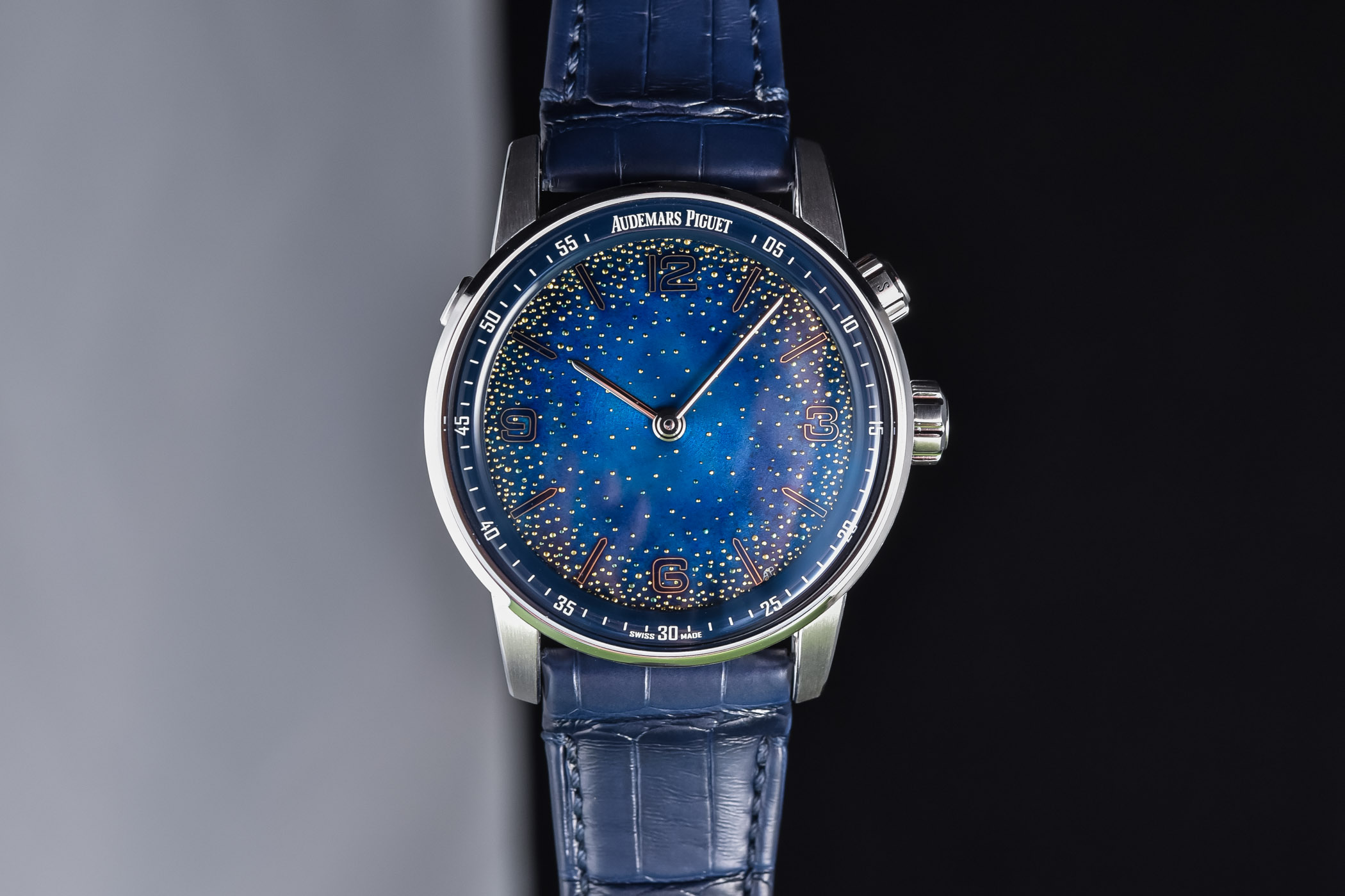



2 responses
Excellent explanation by Michael Friedman, and a beautiful watch. It’s one thing to make a Grande Sonnerie, but to have it so rhythmically perfect and sound so sweet is a rare achievement. Love AP.
$775,000 USD. Right. Christmas is almost here – I’ll take three dozen.